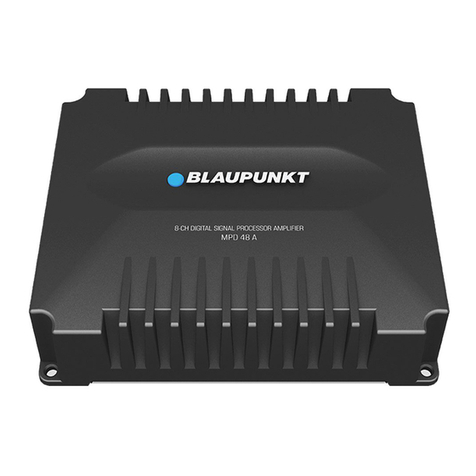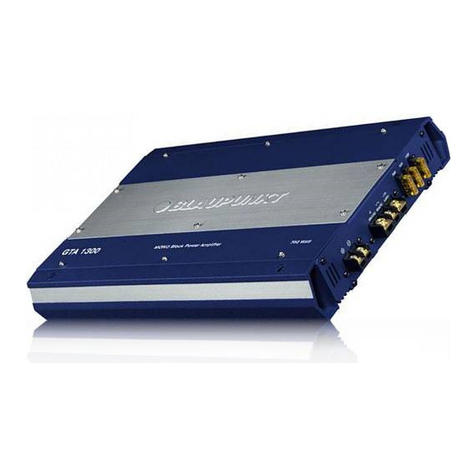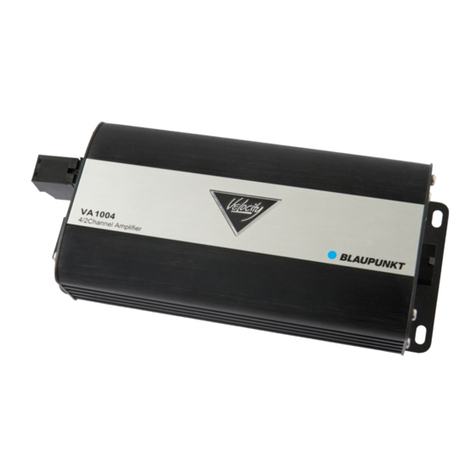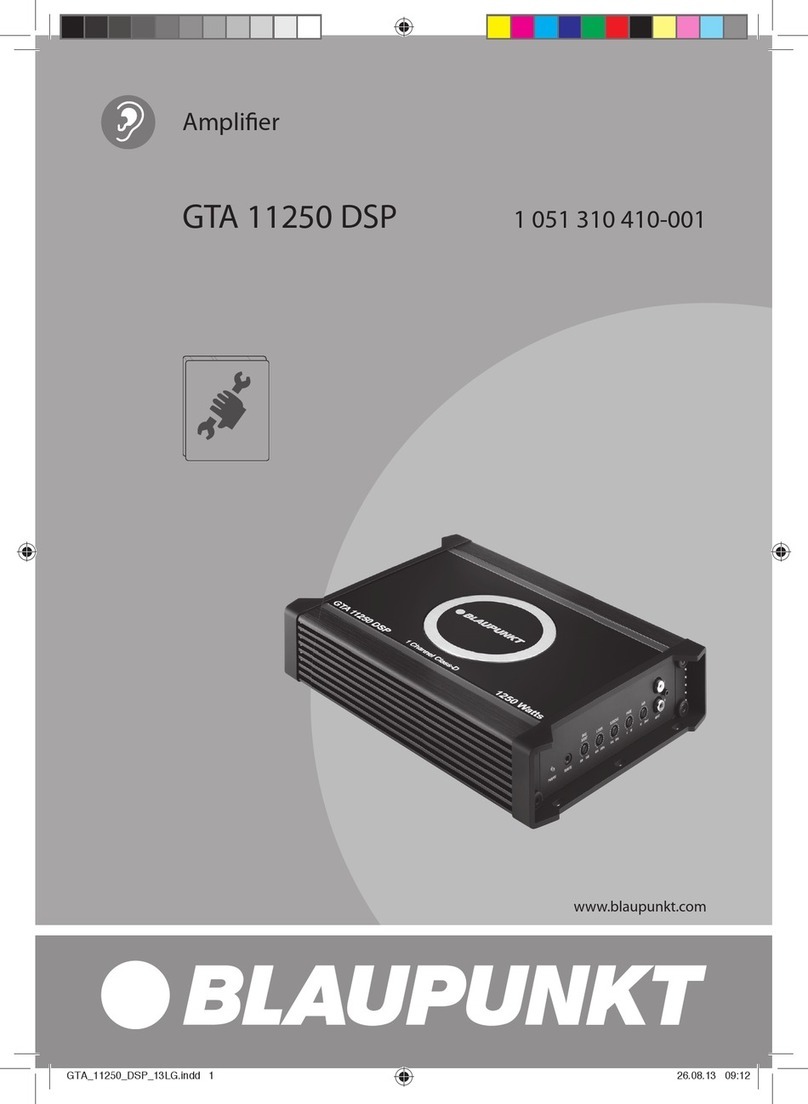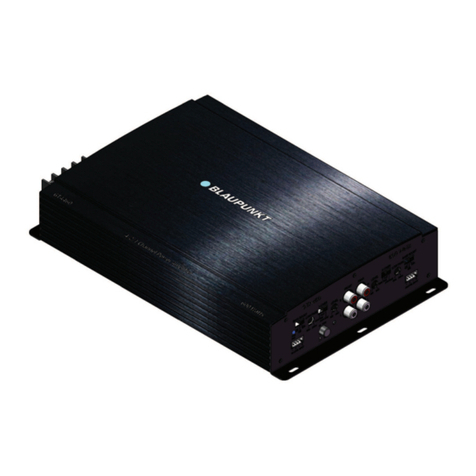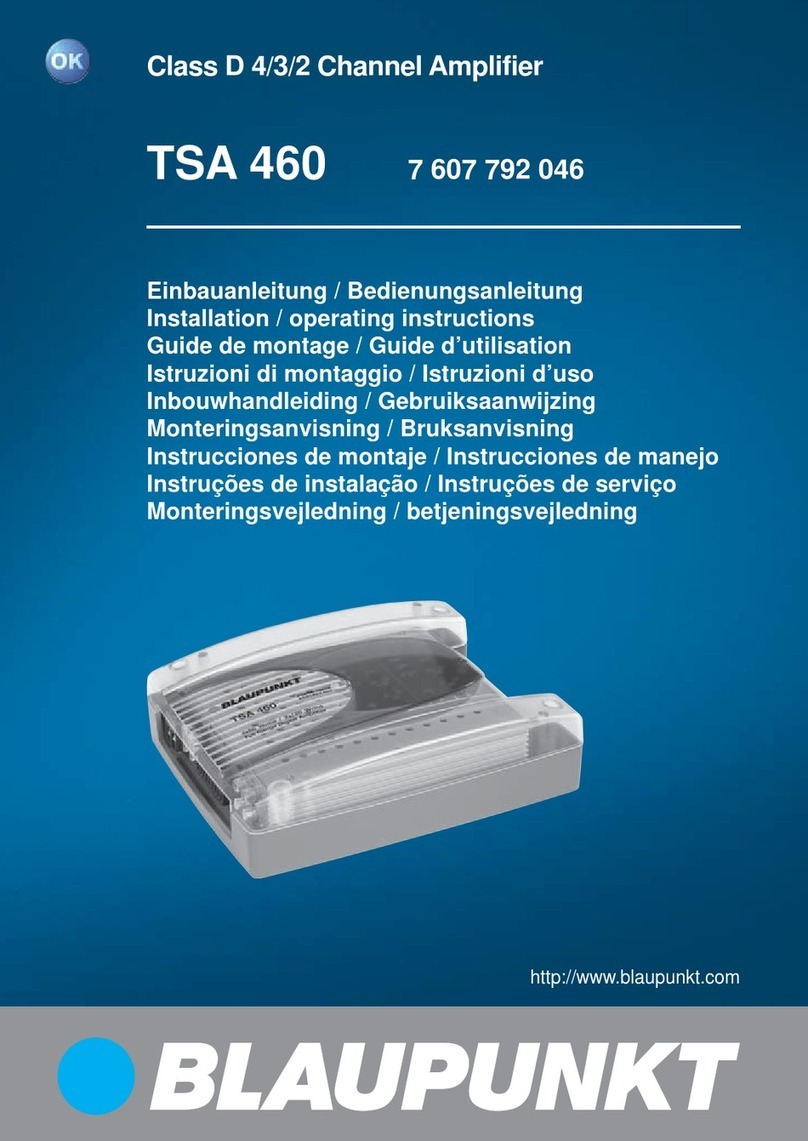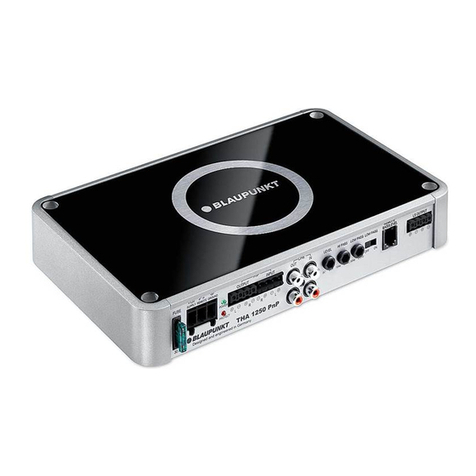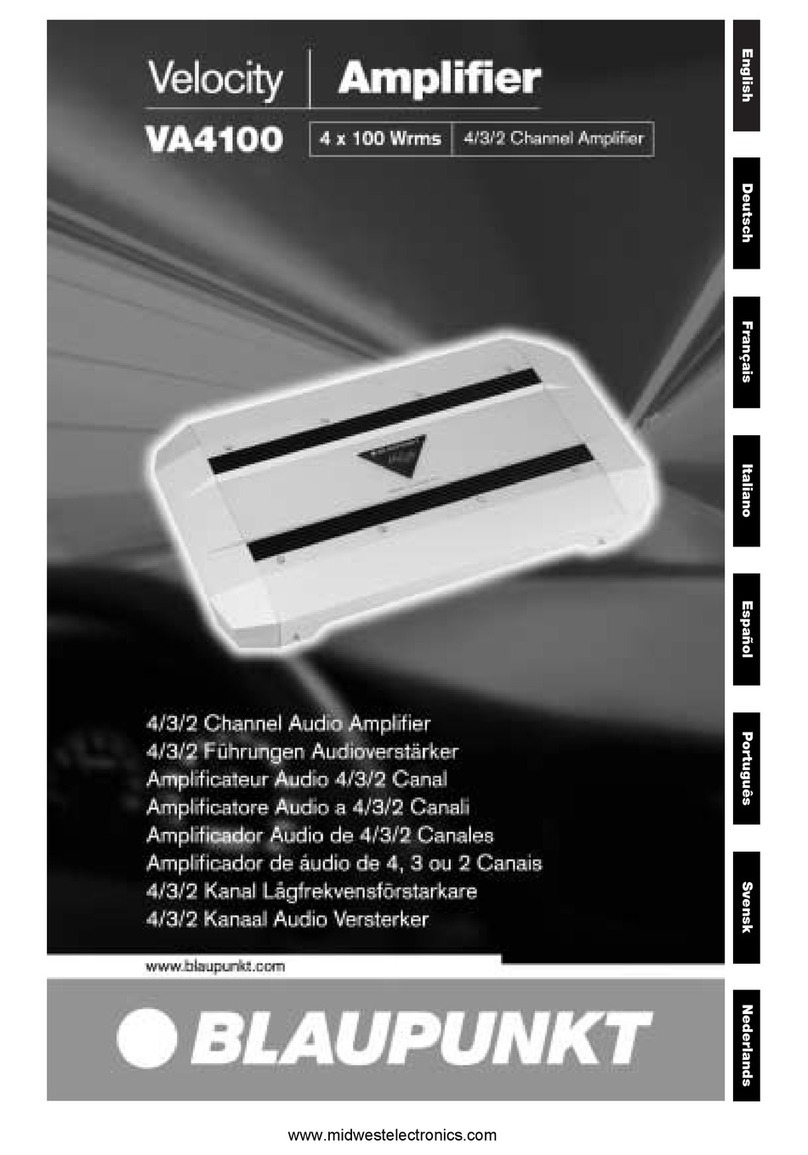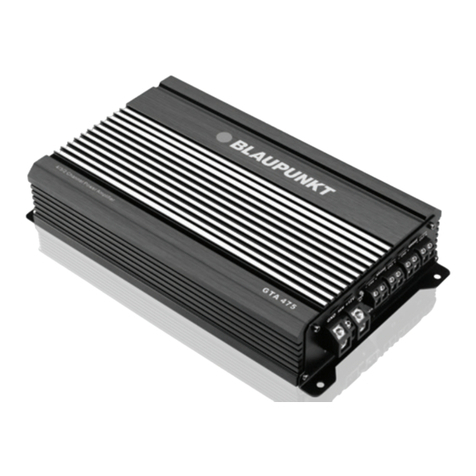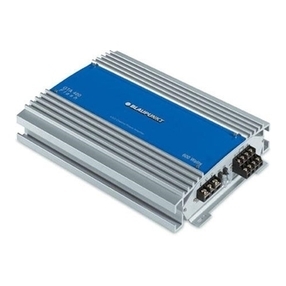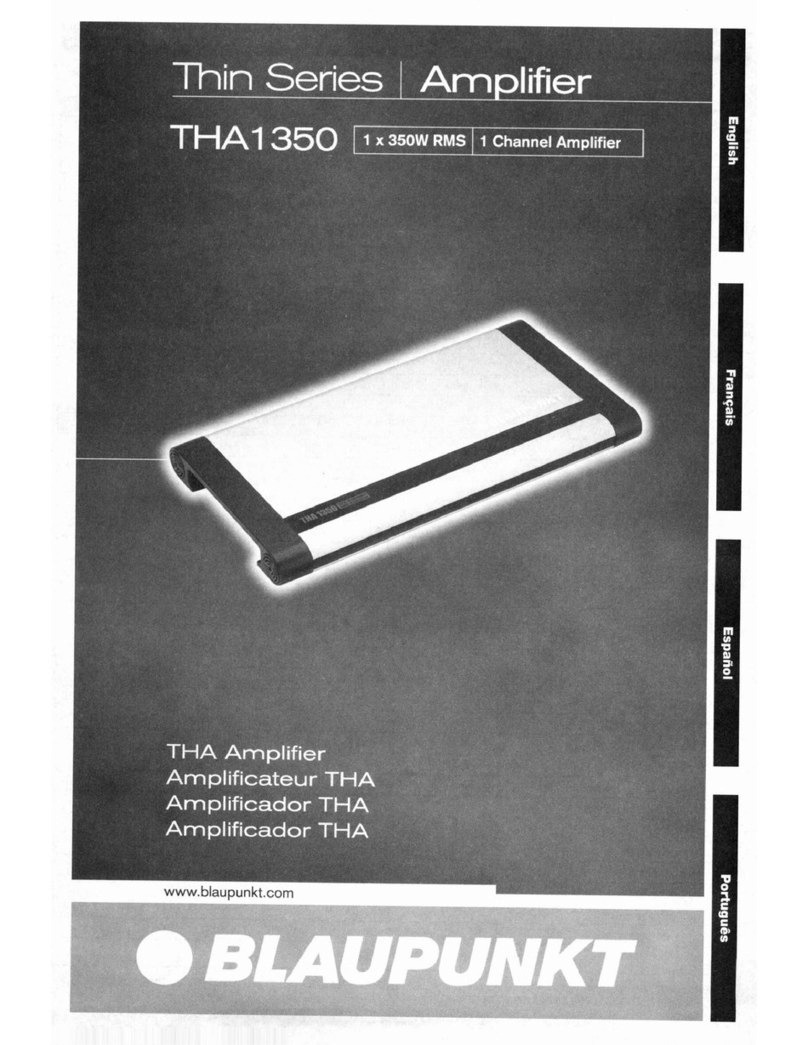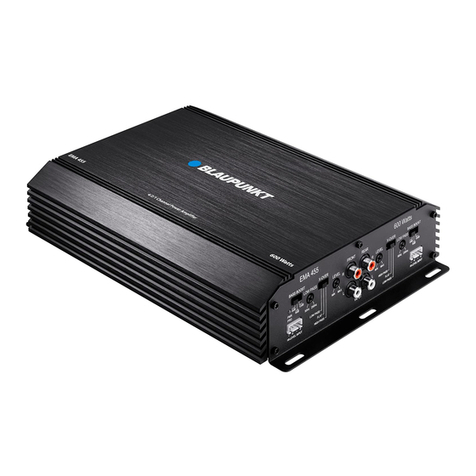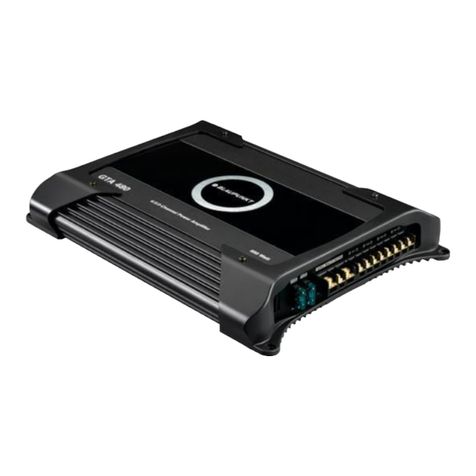
4
THA 475 PnP
Direct Aux Input connection
Connection option in case of missing or occupied
AUX input at the car sound system
Various NF sources, such as an MP3 player or
a mobile navigation, can be directly connected
via a 3.5-mm jack plug at the Direct Aux Input.
All signal sources can be listened to at the same
time and their volume is adjusted at the respec-
tive source device.
Note:
All NF sources must be switched off during in-
stallation and connection!
Installing the jack plug cable
Please use our 5-m jack plug cable with order
number 7 607 001 525 for the connection.
One of its special features is an on/off switch.
Switch position OFF (•):
For installation and deinstallation and no con-
nected NF source.
Switch setting ON: (I / II):
Only after an NF source has been connected.
Caution:
For the connection, always adjust the volume
control to minimum and switch off the amplifier.
If you want to listen to one sound source via
the front and rear loudspeakers, you must con-
nect the Direct Aux inputs with our Y jack plug
cable (7 607 001 524), (see Fig. 6).
Level control
The Level control is used to adjust the input sensitivity
of the power amplifier to the output voltage of your car
sound system.
The adjustment range is from 0.3 V to 8 V.
A few important explanations in this context:
By turning the control clockwise, the input sensitivity of
the amplifier and, therefore, also the volume increases.
However, this is not a volume control; no further amplifier
output can be achieved in the end position, even if it
may sound like that at the beginning. The system merely
increases the volume faster if the volume control of the
car sound system is turned up.
Loudspeaker connections
(If the amplifier is to be jumpered, continue with the
section "Bridged loudspeaker connections" at this
point).
As with every audio component, the correct polarisation
of amplifier and loudspeakers is of essentially importance
for a good bass response. For this reason, ensure that
the positive (+) connection of the amplifier is connected
with the positive connection (+) of the loudspeaker; the
same applies to the negative (-) connections. In addition,
Plus / minus connection
- We recommend a minimum cross section of 1.5 mm2.
The 12-V continuous positive cable must
be connected with the amplifier + cable at
the vehicle adapter cable (7 607 622 ...)
(see Fig. 7).
- Route a commercially available positive cable to the
battery and connect it via fuse holder 30 cm from
the battery.
- Use cable glands for holes with sharp edges.
- Securely fasten commercially available minus cables to
a noise-free earth point (chassis screw, chassis metal)
(not to the minus pole of the battery).
- Scrap the contact surfaces of the earth point until
they are bright and grease with graphite grease.
Integrated fuses (Fuse)
The fuses integrated in the amplifier protect the power
amplifier and the entire electrical system in case of an
error. If a replacement fuse is used, never bridge fuses
or replace them with a type with higher current.
Connection examples
Connection of the voltage supply............. Fig. 2, 2a, b
Connection to car sound system
with cinch output ..................................... Fig. 3
Loudspeaker connections ....................... Fig. 4/5
Direct Aux Input........................................ Fig. 6/6a
+12V
Remote connection of the amplifier with
switchable +12 V voltage source.
This allows the amplifier to be switched on and off using
the on/off-switch of the radio device.
Note:
If the connection is made using a PnP-INPUT cable,
the switch-on is performed automatically.
!As a special feature, +12 V/200 mA are now available
as output switching voltage at the remote input/out-
put after automatic switch-on.
High-level connections (via PnP High-Inputcable
only)
The amplifier features high-level connections (High
Input) to be able to connect to radio devices without pre-
stage outputs (Fig. 2). This allows for a direct connection
at the loudspeaker output of the radio device.
Note:
Unused Out/Input connectors from the PnP cable must
be connected (see Fig. 2a *).
THA 475_Asien.indd 4THA 475_Asien.indd 4 30.05.2007 14:05:39 Uhr30.05.2007 14:05:39 Uhr
